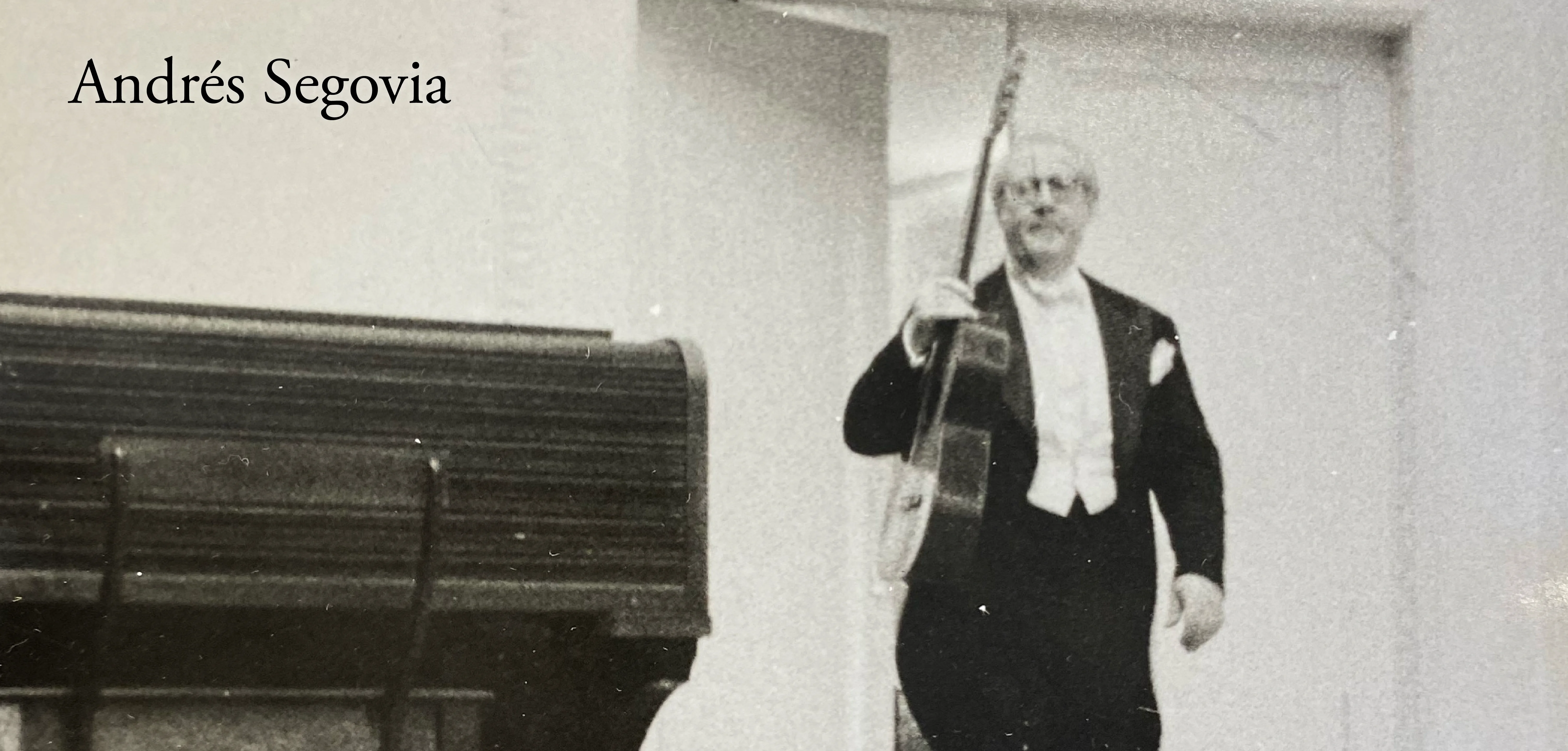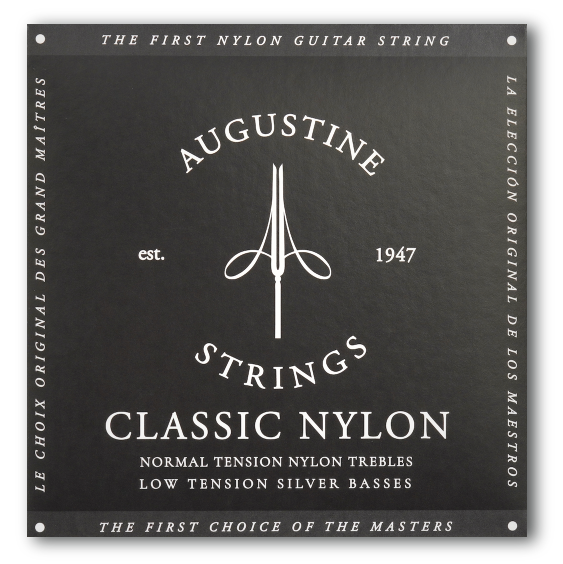"The guitar is a small orchestra. It is polyphonic. Every string is a different color, a different voice." - Andrés Segovia
Andrés Segovia was born on 21 February 1893 in Linares, Jaén, Spain. He was sent at a very young age to live with his uncle Eduardo and aunt María. Eduardo arranged for Segovia's first music lessons with a violin teacher after recognizing that Segovia had an aptitude for music. This proved to be an unhappy introduction to music for the young Segovia because of the teacher's strict methods, and Eduardo stopped the lessons. His uncle decided to move to Granada to allow Segovia to obtain a better education; after arriving in Granada, Segovia recommenced his musical studies. Segovia was aware of flamenco during his formative years as a musician but stated that he "did not have a taste" for the form and chose instead the works of Fernando Sor, Francisco Tárrega, and other classical composers. Tárrega agreed to give the self-taught Segovia some lessons but died before they could meet, and Segovia states that his early musical education involved the "double function of professor and pupil in the same body".
Segovia's first public performance was in Granada at the age of 16 in 1909. A few years later he played his first professional concert in Madrid, which included works by Francisco Tárrega and his own guitar transcriptions of Johann Sebastian Bach. Despite the discouragement of his family, who wanted him to become a lawyer, and criticism by some of Tárrega's pupils for his idiosyncratic technique, he continued to pursue his studies of the guitar diligently.
He played again in Madrid in 1912, at the Paris Conservatory in 1915, in Barcelona in 1916, and made a successful tour of South America in 1919. Segovia's arrival on the international stage coincided with a time when the guitar's fortunes as a concert instrument were being revived, largely through the efforts of Miguel Llobet. It was in this changing milieu that Segovia, thanks to his strength of personality and artistry, coupled with developments in recording and broadcasting, succeeded in making the guitar more popular again.
In 1921 in Paris, Segovia met Alexandre Tansman, who later wrote a number of guitar works for Segovia, among them Cavatina, which won a prize at the Siena International Composition contest in 1952. In 1921, he also met Agustín Barrios in Buenos Aires, Argentina. Segovia was impressed by Barrios' Bach-inspired and arguably magnum opus La Catedral.
In 1923 Segovia visited Mexico for the first time. There Manuel Ponce was so impressed with the concert that he wrote a review in El Universal. Later Ponce went on to write many works for Segovia, including numerous sonatas.
In 1924, Segovia visited the German luthier Hermann Hauser Sr. after hearing some of his instruments played in a concert in Munich. In 1928 Hauser provided Segovia with one of the guitars which he used during his tour of the United States and in other concerts up to 1933. Segovia ordered a further guitar from Hauser and after receiving it passed on the 1928 model to his US representative and close friend Sophocles Papas, who in his turn gave it to his student, the famous jazz and classical guitarist Charlie Byrd, who used it on several records.
After Segovia's debut tour in the US in 1928 the Brazilian composer Heitor Villa-Lobos composed his now well-known Twelve Études (Portuguese: Doze estudos; French: Douze études; German: Zwölf Studien) and later dedicated them to Segovia. Their relationship proved to be lasting and Villa-Lobos continued to write for Segovia. He also transcribed numerous classical pieces himself and revived the pieces transcribed by predecessors like Tárrega.
In 1932, Segovia met and befriended composer Mario Castelnuovo-Tedesco in Venice. Since Castelnuovo-Tedesco did not play the guitar, Segovia provided him with guitar compositions (Ponce's Folias variations and Sor's Mozart Variations) which he could study. Castelnuovo-Tedesco composed a large number of works for the guitar, many of them dedicated to Segovia. The Concerto Op. 99 of 1939 was the first guitar concerto of the 20th century and Castelnuovo-Tedesco's last work in Italy, before he emigrated to the United States. It was premiered by Segovia in Uruguay in 1939.
In 1935, he gave his first public performance of Bach's Chaconne, a difficult piece for any instrument. He moved to Montevideo, performing many concerts in South America in the thirties and early forties.
After World War II, Segovia began to record more frequently and performed regular tours of Europe and the US, a schedule he would maintain for the next thirty years. In 1954, Joaquín Rodrigo dedicated Fantasía para un gentilhombre (Fantasy for a Gentleman) to Segovia. Segovia won the 1958 Grammy Award for Best Classical Performance, Instrumentalist for his recording Segovia Golden Jubilee.
In recognition of his contributions to music and the arts, Segovia was ennobled on 24 June 1981 by King Juan Carlos I, who gave Segovia the hereditary title of Marqués de Salobreña (English: Marquis of Salobreña) in the nobility of Spain.
Segovia continued performing into his old age, living in semi-retirement during his 70s and 80s on the Costa del Sol. Two films were made of his life and work—one when he was 75 and the other 84. They are available on DVD under the titles Andrés Segovia—in Portrait. His final RCA LP (ARL1-1602), Reveries, was recorded in Madrid in June 1977.
In 1984, Segovia was the subject of a 13-part series broadcast on National Public Radio, entitled Segovia! The series was recorded on location in Spain, France and the United States. Hosted by Oscar Brand the series was produced by Jim Anderson, Robert Malesky, and Larry Snitzler.
Segovia died on 2 June 1987 in Madrid of a heart attack at the age of 94. He is buried at Casa Museo Andrés Segovia, in Linares. (Wikipedia)

